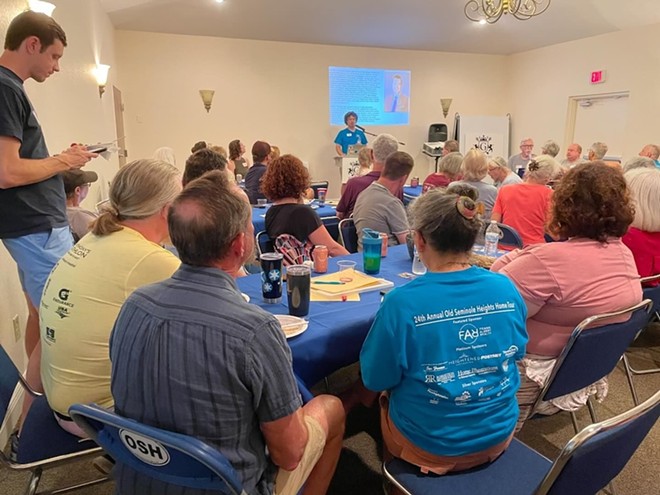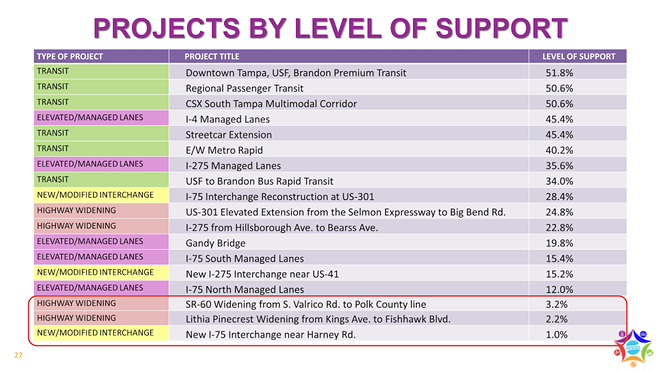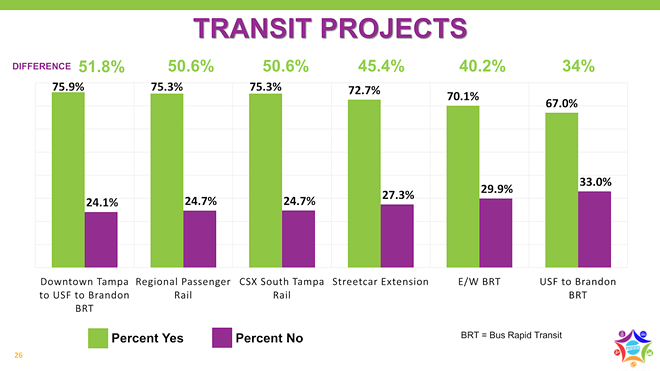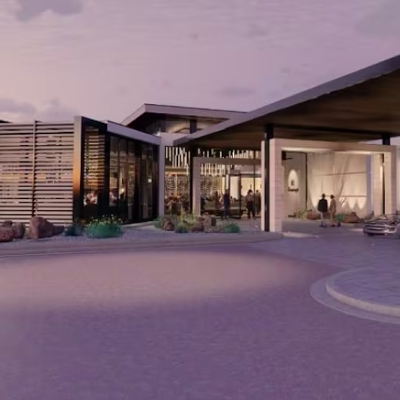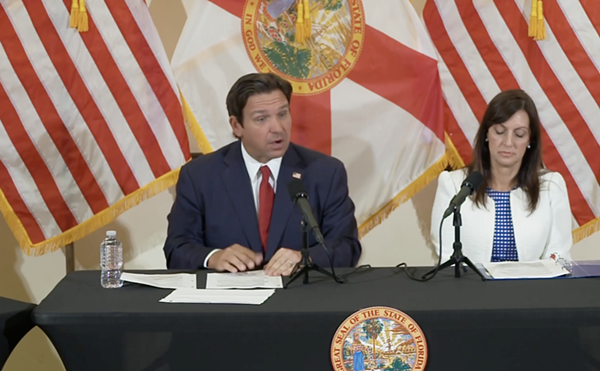The fight against highway widening in Tampa has been long, complex, and incredibly hard. But it’s not over. Thankfully, there are many new neighbors in town who can help.
How it started
To get on the same page, let’s briefly review the past and present of the TBX, then refocus on what we can do about it.The history of the battle to stop TBX started in 2015, when a grassroots organization, Sunshine Citizens, formed to stop it. Members chose this name specifically because the owner of the TBX, the Florida Department of Transportation (FDOT), did not properly inform the public of the plans for the massive $6 billion 90-mile highway expansion project, keeping it “out of the sunshine.”
Fortunately, the Hillsborough Transportation Planning Organization (TPO) had, and still has, the power to impact all federally-funded transportation projects in the county. At its June 2016 Transportation Improvement Program (TIP) public hearing, the TPO Board could have blocked the funds required to pay for the widening.
Over 300 residents organized and showed up to that eight-and-a-half-hour hearing. The public clearly stated that highway widening does not meaningfully improve mobility, and would not result in a strong, healthy Tampa.
A resident living near the project even filed a Title VI Discrimination complaint, as 80% of the households that would be demolished for the project were Black or Latino. This complaint initiated a federal investigation that may have had an impact on the scope of the project.
Despite the incredible organizing efforts against TBX, the TPO Board did not vote to remove it from the project priorities list.
But as a result of community pushback, FDOT “hit reset” on the TBX in 2017. The 90-mile project was rebranded “TBNext,” then separated into smaller segments so that some portions could be opted-out of the widening. Several portions were altered to reduce the right-of-way required and remove widening altogether. Some structures, like Cafe Hey and La Segunda, were saved (until the next widening effort, at least).
After fighting hard, these changes indicated that citizens’ pleas were heard.
How it’s going
Fast-forward to 2024, and somehow the TBX is functionally materializing before our eyes. Nearly every segment has been approved for widening, including the most recent section on I-275 which will further bifurcate Tampa’s dense, historic urban core from Hillsborough Avenue to Bearss Avenue. How could this happen with so many fumbles and so much opposition—from the neighborhood all the way to the national level?History repeated itself at the most recent TIP hearing on June 12. Just like in 2016, verbal and written public comment strongly supported public transit projects and opposed road widening. Even the TPO’s own Citizens Advisory Committee (CAC) issued a formal recommendation voicing strong support for those same public transit projects.
Per its function, the CAC analyzed the TIP document a week prior and passed its own motions recommending that the TPO Board move the following four widely-supported public transit projects up the TIP’s priority list for funding:
- Airport-to-downtown premium transit
- Brightline station multimodal connections
- HART CSX study
- TECO Streetcar Extension
These three transit projects were not moved up the priority list as requested. Instead, TPO Board member Joshua Wostal, a first-term Hillsborough County Commissioner, made a motion to convert a long-anticipated noise wall project on the I-275 segment from Hillsborough to Bearss to a widening project (this segment once included plans to widen per the TBX, but removed widening from the project’s description by a TPO board vote in 2021).
Wostal’s motion passed by just one vote, 8-7.
The majority of those in favor of widening included non-elected industry representatives (Tampa’s port, aviation, and expressway authorities), and elected officials who do not represent the citizens of Tampa (the mayors of Temple Terrace and Plant City).
On the other hand, the seven “no” votes included six elected officials, including the three Tampa City Council Members appointed to the Board, and three Hillsborough County Commissioners.
There was very little discussion on Wostal’s motion outside of Tampa City Councilwoman Lynn Hurtak calling it a “bait and switch.”
Over the last 10 years, residents and workers of Tampa have tirelessly and selflessly shown up to Hillsborough TPO’s TIP public hearings and filled out the their surveys, telling their representatives, including the City of Tampa, Hillsborough County, FDOT, and even the state legislature, to support—with funding—public transit and multimodal transportation options.
The most recent example is the results of the county-wide survey for the Access 2050 Long-Range Transportation Plan (LRTP), the area’s top plan that informs transportation decisions written by TPO staff. It received over 4,600 responses, and even though the majority of those responses were from residents in Unincorporated County (88%), they showed unwavering support for all the proposed public transit projects and considerably less support for the road widening projects. Overall, highway widening is losing favor as people learn that induced demand just creates more traffic, particulate matter pollution from tires has been covering our homes with debris and filling our lungs, impacts disproportionately negatively impact Black and Latino communities, and more.
What’s next
The Tampa Bay community, particularly the neighborhoods in Tampa’s urban core most impacted by I-275, clearly still want to stop the widening, but can they? The answer is yes, and no.Technically, the I-275 segment from Hillsborough Avenue to Bearss has Preliminary Engineering (PE) funding. According to state statute, when a project has PE funding, the only way to stop the widening is a magical handshake between the Secretary of the FDOT and the majority of the TPO Board.
But that doesn’t necessarily mean the project can’t be stopped.
DOTs across the U.S. have stopped similar projects because of community opposition. For example, in 2022, FDOT suspended construction of a turnpike that would’ve split the town of Royal in half.
And it definitely doesn’t mean that citizens are powerless. Here are some specific, tangible things anyone can do right now to influence transportation decisions in the near future.
Push back on the recent highway widening decision made by the TPO Board. Tell the Hillsborough TPO to:
- Reconsider the widening project on I-275 from Hillsborough Avenue to Bearss. This project could cost Florida taxpayers upwards of an estimated $291 million for the design-build phase alone. Only one TPO Board member needs to change their stance; then the board could make a new motion to pause the project. Email and call them, and show up to their upcoming meetings, especially if you live within 500 feet of I-275, between Hillsborough Ave. and Bearss Ave.
- Start talking about removing industry representatives as TPO Board voting members. Since 2016, the non-elected industry representatives from the Tampa Port Authority, Tampa Aviation Authority, and the Tampa-Hillsborough Expressway Authority have always voted pro-TBX. While these entities move tourists and goods, they have very specific special interests. Instead of having a vote, they could be retained as “advising members.”
- Support the HART Arterial Bus Rapid Transit (BRT) project. The project from downtown Tampa traveling north along Florida Ave. is well-studied and ready to go. The key to moving it forward is FDOT funding and support of HART’s plan, plus City of Tampa support, including local operations funding. Support from Tampa citizens would help move it forward.
- Fund the Tampa streetcar expansion project. Similar to the HART Arterial BRT study, this project has widespread support from key agencies and the community. What is still needed is local funding. Ask Tampa City Council to find the up-front “local match” funds to make this project a reality.
- Fund the HART transit authority at a minimum $10 million per year. Funds are immediately needed for the cost of operations, but also for additional buses, and more. It is common for local governments that understand the importance of public transportation in poverty reduction and the economy to fund public transit. There is still time for the council and mayor to allocate funds in this year’s budget cycle in which they have over a billion dollars. Budget hearings and decisions will take place in August and September.
Contact information
- Hillsborough Transportation Planning Organization (TPO): [email protected], 813-665-1357
- Tampa City Council: [email protected], 813-274-8251
- Tampa Mayor Jane Castor: [email protected], 813-274-8131
More actions will be planned. Contact Transit Now Tampa Bay at [email protected] and join the @TransitNowTampaBay group on Facebook.
Dayna Lazarus is an A.I.C.P. certified urban planner in Tampa. She co-founded the grassroots organization Transit Now Tampa Bay, sits on the board of the Sunshine Citizens, and has been a member of the Hillsborough TPO’s Citizens Advisory Committee since 2017.
Readers and community members are always welcome to send letters to the editors. Please let us know if we may consider your submission for publication.
Subscribe to Creative Loafing newsletters.
Follow us: Google News | NewsBreak | Reddit | Instagram | Facebook | Twitter
UPDATED: 08/08/24 11:24 a.m. Updated CAC recommendations about four widely-supported public transit projects, not three projects. (4:14 p.m. changed a phone no.)

